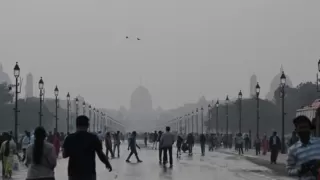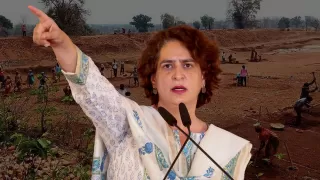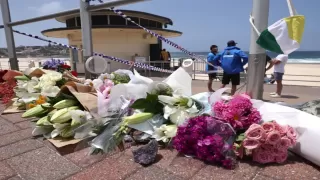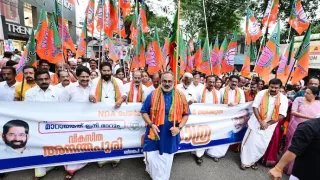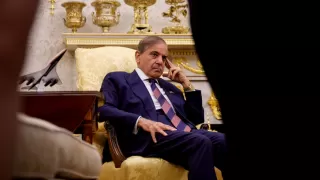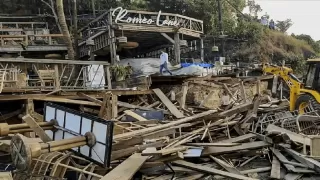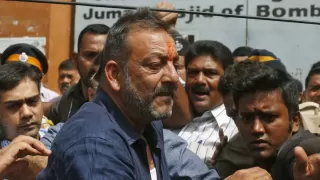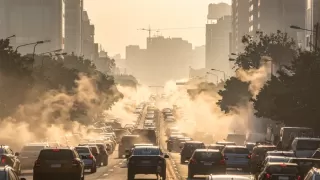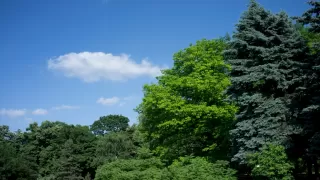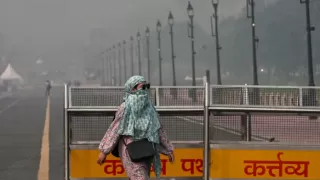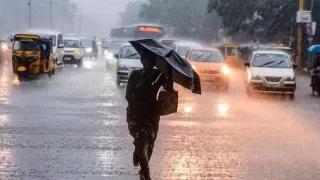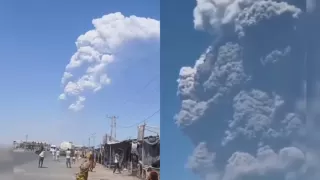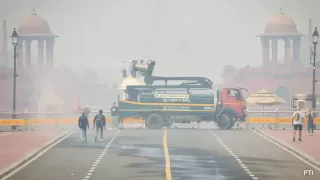Delhi woke up once again under a dense blanket of smog, with visibility dropping sharply and pollution levels remaining dangerously high. The early morning hours painted a grim picture for residents as the toxic haze clung to the air, making breathing difficult and raising health concerns across the city. With stagnant winds and plummeting temperatures worsening the situation, people found themselves grappling with another day of poor air quality.
As the pollution crisis deepened, the capital continued to struggle against the choking smog that has persisted for weeks. Many residents reported irritation in the eyes, throat discomfort, and worsening respiratory symptoms, highlighting the severe impact of the toxic environment. Despite ongoing mitigation measures, the levels of pollution remained alarmingly high, reflecting the gravity of the situation unfolding each day.
The overall air quality showed no signs of improvement, leaving citizens anxious and frustrated. From busy markets to residential neighborhoods, the dense haze refused to clear, while health experts continued to warn vulnerable groups to stay indoors. The city’s worsening air quality remained a pressing concern, demanding immediate and long-term solutions.
Delhi’s Air Quality Plunges as Multiple Stations Record Severe Levels
Out of 39 monitoring stations across Delhi, 20 recorded an AQI above 400, placing them firmly in the ‘severe’ zone. The remaining 19 stations were in the ‘very poor’ category, recording AQI levels between 300 and 400. This widespread deterioration highlighted how deeply the city was impacted as pollutants continued to concentrate in the air. The stagnant conditions due to low wind speed and a sharp fall in temperatures pushed the AQI to alarming levels.
According to early morning readings, the overall AQI stood at 397 at 6 a.m., confirming the city’s poor air quality conditions. Thick layers of smog engulfed the capital, reducing visibility and leaving a noticeable smell of pollution in the air. The grim readings reflected an 18-day streak of continued ‘very poor’ air quality, with several days crossing into ‘severe’ territory.
The worst-hit areas included Vivek Vihar and Rohini, which recorded AQI levels of 458. Jahangirpuri followed closely at 455, while Wazirpur recorded 448 and DTU logged 444. Over the weekend, the situation remained equally bleak, with Sunday’s AQI at 391—well within the ‘very poor’ range. Health risks were high, and outdoor activities became increasingly unsafe.
Impact of Prolonged Pollution on Residents and Healthcare Demand
The long-lasting smog episode intensified health concerns among residents. Hospitals and clinics reported increased cases of respiratory issues, eye irritation, headaches, and worsened asthma symptoms. Children, senior citizens, and people with pre-existing lung conditions suffered the most as airborne pollutants penetrated deeper into the respiratory system.
Medical experts urged the public to remain cautious, avoid strenuous outdoor activities, and use protective masks. With pollution levels persisting for weeks, many residents found daily routines disrupted, as the toxic environment impacted both physical health and mental well-being. Government authorities continued to recommend measures under the stricter Stage 3 of the Graded Response Action Plan.
The smog that enveloped the city left many households worried about prolonged exposure. Despite efforts to curb emissions, factors such as stubble burning, traffic pollution, and seasonal changes led to a steady spike in hazardous particles. People increasingly turned to air purifiers and home remedies, hoping to mitigate the effects while waiting for conditions to improve.
Chaotic Protests Erupt as Air Quality Crisis Deepens
Amid the rising frustration over the pollution situation, citizens staged a protest at India Gate, demanding stronger and faster action. However, what began as a peaceful demonstration soon turned chaotic when some protesters reportedly used chilli spray on police personnel during a scuffle. The incident shocked onlookers and created a brief period of disruption in the area.
Police officials stated that protesters were blocking a crucial stretch near the C-Hexagon, obstructing ambulances and medical staff attempting to pass. Despite repeated attempts to clear the route, tensions escalated when demonstrators refused to move. The unexpected use of chilli powder and pepper spray on officers turned the situation volatile.
A senior officer shared that several personnel suffered irritation and burning sensations in their eyes and face, with some being taken to RML Hospital for treatment. Legal action is expected to follow against those involved in the altercation. This unusual incident added yet another layer of concern to an already troubled environment.
Public Outcry and the Need for Stronger Policies
The group leading the protest emphasized that worsening air quality has made survival increasingly difficult. Their message reflected the sentiment shared by many Delhi residents who feel that urgent action is required to tackle the crisis. People continued raising slogans, urging authorities to implement stricter emission controls and sustainable long-term solutions.
With pollution choking the capital for weeks, frustration has reached new heights. Citizens are demanding accountability and stronger environmental policies that prioritize health and safety. The incident at India Gate showcased the growing unrest, pointing to the need for constructive dialogue and timely intervention.
As the smog persists and health concerns mount, experts agree that collaborative efforts between government bodies, environmental agencies, and citizens are essential. Only a united approach can pave the way for cleaner air and a healthier future for the people of Delhi.
Also Read: India’s New Labour Codes Explained: Key Changes Ahead





